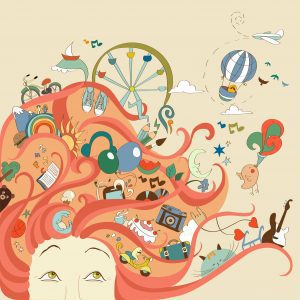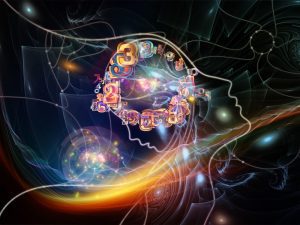0
You have 0 items in your cart

Dreams can be pleasant, horrid or outright creepy. We all dream — even if we don’t recall anything the next morning. But why do people dream? What do these dreams mean, anyway?
We set out to unravel all the mysteries behind what makes people dream and why we even dream in the first place.

There’s no fixed limit to what you can experience when you dream and really no reason to why you end up dreaming. Stresses in one’s life can manifest in dreams plainly or be ingeniously masked with imagery. For example, a dream about a strange ghost chasing you in a dark forest could be the stress you feel about a relationship with a close friend. A dream about being stuck inside a dark room with no doors or windows could be an echo of your feelings about impending doom.
Scientists attempt to offer explanations linked to the phases of sleep where dreams occur:

At the 90 minute mark, after most people have passed through deeper, slow wave sleep, they switch into the REM sleep. The body lies still through the REM phase, but the brain is nearly as active as when it is fully awake. At the same time, motor signals from the brain to the body are inhibited to paralyze us temporarily. Otherwise, we’d be all up and running from monsters in our pajamas or trying to swim out of our beds.
The Future belongs to those who believe in the Beauty of their Dreams

There are several theories and explanations to why we dream, but nobody knows for sure. Researchers say that dreams have no clear meaning and are illogical activities that occur in a sleeping brain. Others say that dreams are essential for physical, emotional and mental health. The most honest answer is we don’t yet know why we dream.
But while we still don’t have definite answers, here are some theories that attempt to debunk the mysteries behind dreaming.
Sigmund Freud proposed that while our dreams are a collection of images from our daily lives, they have symbolic meanings. He believed that dreams are a perpetual window into our subconscious selves. He says that dreams reveal a person’s thoughts, motivations, and unconscious desires. They are one way for people to satisfy their hidden urges and desires. Freud believed that by analyzing these elements, the unconscious content would be relieved to the conscious mind, and all issues stemming from it could then be addressed and resolved.
 2. We Dream to Remember
2. We Dream to RememberTo boost performance on certain jobs, sleep is good, but dreaming while we sleep is even better. In 2010, researchers found that their subjects were much better at solving a complex 3D maze when they napped and dreamed of the maze before attempting it a second time. In fact, they were up to five times better than those who had only thought of the maze while awake and those who napped but didn’t dream about the maze. The researchers concluded that some areas of the memory are sharpened when people are asleep, and dreams are proof that their memories are being jogged.
Stress neurotransmitters in our brains are much less active at the REM stage of sleep, even when we dream of traumatic experiences. In light of this, some researchers have been led to believe that one purpose of dreaming is to help us solve the problems and challenges in our lives. During a study, researchers woke their subjects just as they were drifting into the REM stage of sleep. They discovered that those who weren’t allowed to dream had a lot of tension, anxiety, and depression. Most experts believe that dreams are there to help us cope with stress and solve the problems facing us.
 4. We Dream to Keep Our Brains Working
4. We Dream to Keep Our Brains WorkingThe continual brain activation theory proposes that our dreams are as a result of our brain’s need to continually create long-term memories for it to function properly. When its input falls below a certain level, like when we are asleep, the brain automatically triggers generation of data from its memory storages, which then appear to us in the form of feelings and sensations in dreams. To put it in a simple way, our dreams might be a temporary ”screensaver” to our brains, so they don’t completely shut down whenever we sleep.
Nightmares blaze through our minds, vivid and frightening, making our hearts pound. And unlike ordinary dreams, nightmares usually awaken us. Some distinct moment of panic or fear jolts us into consciousness and out of the vile nightmare.

It’s thought that the most common causes of nightmares are trauma and stress. But what makes them so chilling enough to wake us out of deep sleep? Two different regions of our brains could shed some light to this:
REM sleep provides the setting for the most vivid dreams and nightmares. It’s a sleep stage which is both deep and active. During REM, our limbic systems (brain’s centre of emotion) get into a frenzy of activity. At the same time, our prefrontal cortex (brain’s centre of logic and reasoning) snoozes off. So, you are at a stage where you have wide-awake emotions but dormant thinking. No wonder you can dream about the most outrageous things and just shrug them off.
Aside from stress and trauma, nightmares can also be caused by:
If you have recurring nightmares, your subconscious mind may be alerting you of something. Don’t ignore it. If you can’t figure out on your own why you’re always having nightmares, consult an experienced mental health care professional. He or she may find out what’s causing your bad dreams and help you find ways to stay calm.
Remember that no matter how horrible a nightmare gets, it’s not real and will never happen in real life.
If you never CHASE your Dream you will never CATCH them.

Seriously speaking, a lucid dream is basically a hole between the conscious and unconscious world. It is a state in which a person knows they are dreaming and has the ability to make changes to their dreams. It usually occurs while a person is in the middle of a dream and suddenly realizes they’re dreaming. This is dream-initiated lucid. A wake-initiated lucid happens when you go from a waking state directly into a dream state, with no clear lapse in consciousness. In both these scenarios, you have some ability to control your dream self and the dream itself.
If you’re interested in learning how to lucid dream, here are a few pointers to help you get started:

Know when lucid dreams most commonly occur. Lucid dreams occur during the REM sleep. The first REM sleep typically occurs ninety minutes after you fall asleep. The aim of knowing this is to wake up during REM phase, then fall back to sleep and continue dreaming, having known that you’re dreaming.

Wake up in the middle of the night. Set the alarm to go off ninety or so minutes after you fall asleep. You’re more likely to be in REM phase during this time.

Stay awake for some time. Write down your dream as soon as you wake up. You can also get up and pace up and down for a while or make yourself a snack. Your goal is to get your conscious mind alert and active, while your body is still sleepy. Researchers say that staying awake for around 30 minutes gives you the highest chance of having a lucid dream.

Focus on your dream as you fall asleep again. Go back to bed and focus on the dream you were having. Imagine yourself continuing the dream. Even if it takes a while to actualise the dream in your brain, you’ve got a high chance of going into a lucid dream.

While researchers have not demonstrated the reason why we have dreams, many experts believe that dreams actually do have meaning.
The meanings of the most common dreams are not black and white. Dreams are presented in a symbolic fashion. Your unconscious won’t spell it out for you. It’s your job to figure it out when in a conscious state. To help you with this, we looked at 5 of the most common dreams we all keep having and their possible meanings:

1. Falling: Loewenberg calls this type of dream a red flag from your conscious state. She says that this dream is common in people who are going through a major storm in their life with relationships, work or elsewhere.

2. Death: Lawrence’s interpretation of this dream reveals a wish to terminate something in life — could be a toxic relationship, a stressful job, a bleak career or something bad in your past. Grant’s dictionary explains that this dream is not really a nightmare. It says that it’s a dream meant to encourage someone to embark on a new endeavor and start afresh.

3. Being chased: Despite the horrendous feel of this dream, Wallace considers it a sign of something positive. He believes that such a dream is supposed to inspire or encourage the dreamer to face a problem that has been disturbing them for some time. Loewenberg says that this dream occurs more frequently in women than men.

4. Flying: Wallace claims that when someone dreams that they are flying, they are encouraged to stop worrying about current issues and allow things to fall into place naturally. He says that flying could also be a sign that there is something out of control in someone’s life.

5. Cheating Partner: Most researchers agree that this dream should never be taken as a prediction or prophecy into something. According to Loewenberg, the cheating dream often happens when your partner is spending too much of their time on things that don’t involve you. Similarly, Lawrence says that lack of trust in a romantic relationship tends to cause such dreams.
Dreams have mystified humanity ever since time immemorial and will most likely continue to puzzle us. Although research has enabled us to get insights into what happens in the human brain when we dream, we may never really know why we dream.
A single Dream is more powerful than a thousand realities. – J.R.R Tolkien
This Privacy Policy describes how SmartMinds Enterprise OÜ (“SmartMinds”, “we”, “us” or “our”) handles information about yourself that you may provide us with through your use of the Site or Service (“Personal Information”) and should be read along with our Terms of Use posted here, and all other operating rules and additional terms and conditions published on our Site.
SmartMinds is committed to keeping your information secure and managing it in accordance with our legal responsibilities under privacy and data protection laws where we operate. SmartMinds uses your Personal Information only in accordance with this Privacy Policy and Applicable Law. SmartMinds does not sell your Personal Information to third parties. Any capitalized terms not defined in this Privacy Policy are defined in the Terms of Use.
We employ the use of cookies. By using SmartMinds‘s website you consent to the use of cookies in accordance with SmartMinds’s privacy policy.
Most of the modern day interactive web sites use cookies to enable us to retrieve user details for each visit. Cookies are used in some areas of our site to enable the functionality of this area and ease of use for those people visiting. Some of our affiliate / advertising partners may also use cookies.
Unless otherwise stated, SmartMinds and/or it’s licensors own the intellectual property rights for all material on SmartMinds All intellectual property rights are reserved. You may view and/or print pages from https://smartminds.one for your own personal use subject to restrictions set in these terms and conditions.
You must not:
We will approve link requests from these organisations if we determine that: (a) the link would not reflect unfavourably on us or our accredited businesses (for example, trade associations or other organisations representing inherently suspect types of business, such as work-at-home opportunities, shall not be allowed to link); (b)the organisation does not have an unsatisfactory record with us; (c) the benefit to us from the visibility associated with the hyperlink outweighs the absence of SmartMinds; and (d) where the link is in the context of general resource information or is otherwise consistent with editorial content in a newsletter or similar product furthering the mission of the organisation.
These organisations may link to our home page, to publications or to other Web site information so long as the link: (a) is not in any way misleading; (b) does not falsely imply sponsorship, endorsement or approval of the linking party and its products or services; and (c) fits within the context of the linking party’s site.
If you are among the organizations listed in paragraph 2 above and are interested in linking to our website, you must notify us by sending an e-mail to Please include your name, your organisation name, contact information (such as a phone number and/or e-mail address) as well as the URL of your site, a list of any URLs from which you intend to link to our Web site, and a list of the URL(s) on our site to which you would like to link. Allow 2-3 weeks for a response.
Approved organizations may hyperlink to our Web site as follows:
No use of (name)’s logo or other artwork will be allowed for linking absent a trademark license agreement.
Without prior approval and express written permission, you may not create frames around our Web pages or use other techniques that alter in any way the visual presentation or appearance of our Web site.
We shall have no responsibility or liability for any content appearing on your Web site. You agree to indemnify and defend us against all claims arising out of or based upon your Website. No link(s) may appear on any page on your Web site or within any context containing content or materials that may be interpreted as libelous, obscene or criminal, or which infringes, otherwise violates, or advocates the infringement or other violation of, any third party rights.
We reserve the right at any time and in its sole discretion to request that you remove all links or any particular link to our Web site. You agree to immediately remove all links to our Web site upon such request. We also reserve the right to amend these terms and conditions and its linking policy at any time. By continuing to link to our Web site, you agree to be bound to and abide by these linking terms and conditions.
If you find any link on our Web site or any linked web site objectionable for any reason, you may contact us about this. We will consider requests to remove links but will have no obligation to do so or to respond directly to you.
Whilst we endeavour to ensure that the information on this website is correct, we do not warrant its completeness or accuracy; nor do we commit to ensuring that the website remains available or that the material on the website is kept up to date.
We have a 30-day Money Back Guarantee when purchasing Realized Mind, all we ask if that within the 30 days to complete the learning experience and if you truly feel you did not receive any value from the experience we are happy to refund your payment and close your account.
To the maximum extent permitted by applicable law, we exclude all representations, warranties and conditions relating to our website and the use of this website (including, without limitation, any warranties implied by law in respect of satisfactory quality, fitness for purpose and/or the use of reasonable care and skill). Nothing in this disclaimer will:
The limitations and exclusions of liability set out in this Section and elsewhere in this disclaimer: (a) are subject to the preceding paragraph; and (b) govern all liabilities arising under the disclaimer or in relation to the subject matter of this disclaimer, including liabilities arising in contract, in tort (including negligence) and for breach of statutory duty.
To the extent that the website and the information and services on the website are provided free of charge, we will not be liable for any loss or damage of any nature.
